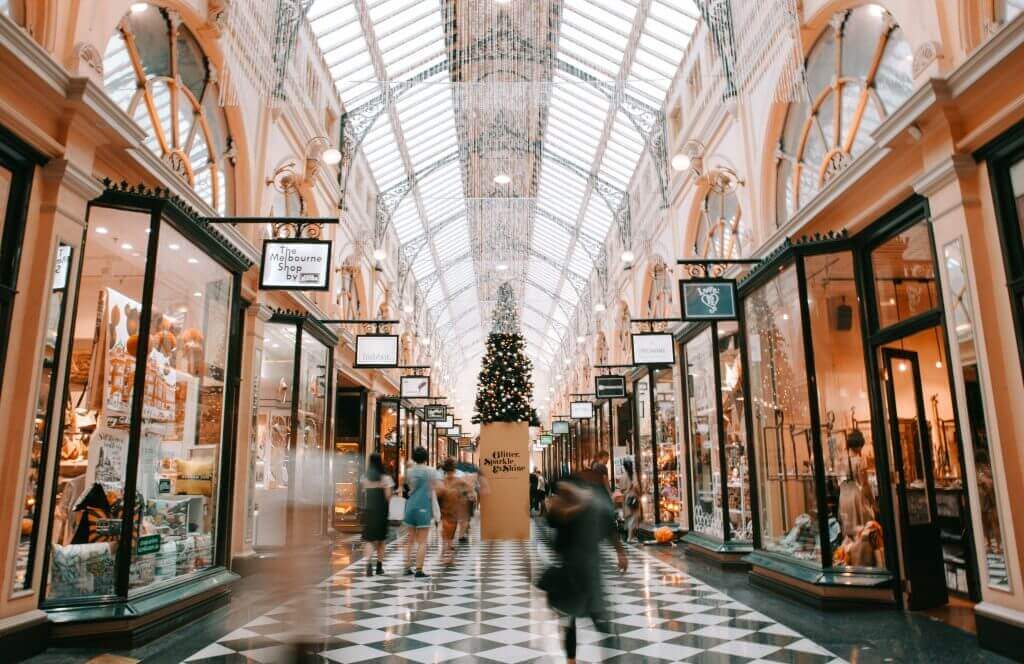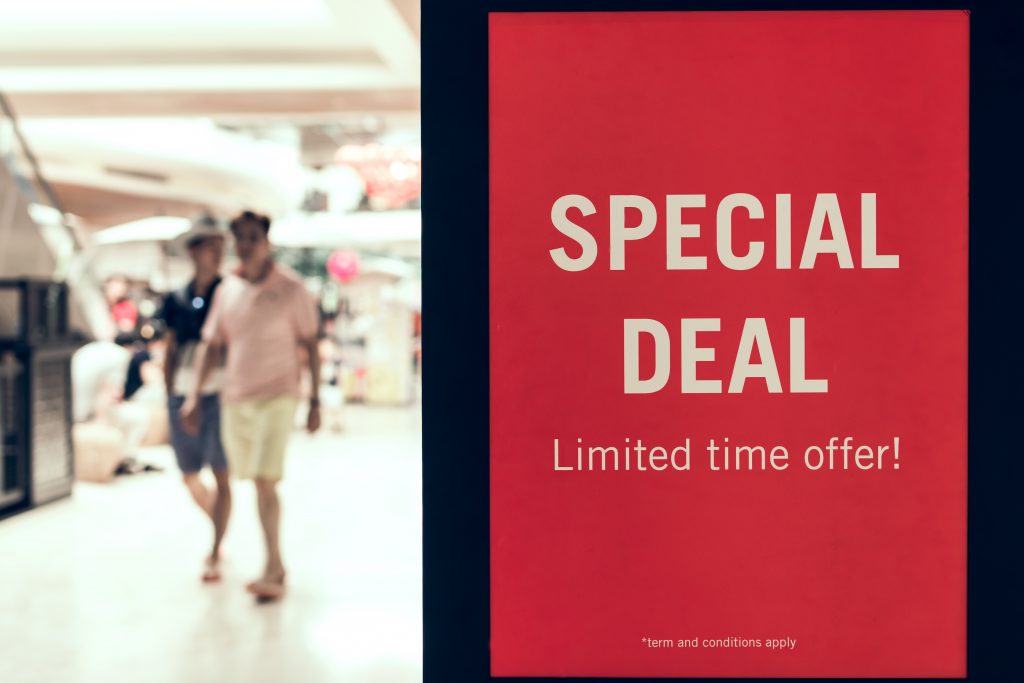The most important shopping days and how to benefit from them
- 15 April 2019

If there’s one thing you can be certain about in the online world, it’s the sales boost on special days.
Why?
Because shoppers are actively looking to find the best deals and spend their hard earned cash.
The very first thing you need to do if you are a brand, retailer or manufacturer is to know more about buyers’ behaviors and patterns on special days. Make sure to be informed of the most active times when they spend their money and make them choose your products. Also, you need to categorize the possible buyers to target your campaigns and promotions effectively.
In this article, you’re going to learn the most popular online shopping days and how to win at the shopping craziness.
Which shopping days are the most popular and why?
Let’s dive in more detail and go step by step.
Valentine’s Day (February 14)
Valentine’s Day looks very different from even a few years ago. The number of people planning to celebrate Valentine’s Day is decreasing year by year. In 2009, 72% of adults aged 18-34 were planning to celebrate this special day while it was only 53% in 2019.
Those who celebrated Valentine’s in 2019 spent $60 more than in 2009. Spending keeps going higher and has been expected to exceed $20 billion this year only in the USA, which refers to an increase of 6 percent. Men are the majority of buyers and department stores are the most popular destinations for Valentine’s Day shopping, followed by discount stores, online stores, specialty stores, florists, small or local businesses, jewelry stores, and designer clothing stores according to National Retail Federation.
Mother’s Day (the 2nd Sunday of May)
86 percent of Americans celebrate Mother’s Day and they spend on average $186 per person. When we turn to the UK, we see that 60% of individuals celebrate this special day and spend £59 per person on average. Mother’s Day is not only when children buy gifts to their own mothers, but also shoppers buy gifts for their grandmothers, sisters, friends and even daughters.
According to NRF, the expectation of Mother’s Day expenditure in the U.S. in 2018 was $23.1 billion. In 2017, $23.6 billion was spent! Jewelry, special outings such as dinner or brunch, flowers, gift cards, clothing, electronics, personal services are the popular gifts for mothers.
Back to School (August 1 through Labour Day)
Starting from the end of summer, Back to School season is the second biggest shopping season of the year outcompeted only by Black Friday and Cyber Monday. Therefore, brands and retailers need to stand out in competition. In 2018, NRF’s expectation of expenditure for Back to School was $82.8 billion only in the U.S. ($58.1 billion online sales). Electronics such as computers, calculators or phones, shoes, supplies such as notebooks, pencils, backpacks and lunchboxes are the popular products spared for Back to School spendings.
The effect of mobile grows during Back to School period as 33.8% of sales were made through mobile, generating $14.5 billion, and 66.2% made by desktop.
Diwali (October)
Diwali is one of the most popular festivals of Hinduism and is celebrated every autumn. During the festival, all the buildings are brightly illuminated for five days. People clean, renovate and decorate their places. Especially decorations are a big part of shopping during Diwali along with Diwali gifts, jewelry, ornaments, and special clothing. The festival season covers 35%-40% of the annual sales of e-commerce in India. Top online retail firms generate around $3 billions of sales, as the estimations suggest.

Halloween Week (the last week of October)
Halloween is getting more and more popular across the world. Brands need to be prepared for the shopping season it offers because it brings about $9 billion of spending in the U.S. for the last few years. People across the world are interested in the Halloween decor and the Americans also shop for Halloween candy.
But the most expensive part of this holiday is the costumes. Another point to consider for retailers and brands is that 40% of shoppers start seeking for the costumes and other products before the week arrives. For 2019, it is estimated that 64% of the population will celebrate Halloween with an average spending of $86 per person and 24% of all Halloween customers prefer shopping online.
Thanksgiving Day (last week of November)
Thanksgiving Day is becoming more and more important for brands and retailers as the spending increases year by year and the holiday becomes the 3rd most important shopping day in the year. In 2018, online spending reached $3.7 billion with 27.9% growth. Young people’s interest in Thanksgiving is also increasing, so the brands should consider this while planning their Thanksgiving Day promotions and campaigns, without forgetting that the parents comprise the highest numbers of shoppers. Clothing, electronics, jewelry, personal products like perfume are the most popular Thanksgiving Day gifts.
Singles’ Day (November 11 – China)
China’s one-day shopping event keeps breaking its own records. It is now the largest one-day retail event in the world. In 2018, Alibaba Group made $30.8 billion of sales during Singles’ Day. The day is actually international with the participation of 180,000 international brands from various countries including Japan, the U.S., Korea, Australia and Germany.

Black Friday (the day after Thanksgiving)
Black Friday which, valid in many countries, is huge and continuing to expand. Stores offer the best prices on this popular shopping day to be the chosen one among countless rivals. Major sales and major visits are highly possible on Black Friday if you prepare wisely, as people are buying plenty of goods.
In 2017, UK Black Friday online retail sales generated about £1.39 billion, with technology being the most popular category. Australians spent more than $200 million. However, the winner of the day was the US with $5 billion that US shoppers spent in just 24 hours on Black Friday 2017.
According to the results again, 16% of the shoppers prefer to shop only at regular stores, 29% shop mostly at brick and mortars, 26% of them preferred to shop mostly online and 20% were purely online shoppers. Regardless where they start spending, 55% start searching for the products online. Among all of them, the average spending is 335$ (the biggest spenders are 24-35 year olds).
The most preferred goods are: technology, clothes, homeware and perfume/cosmetics.
Black Friday is also popular in other countries. We made a study with Deloitte about the numbers in Poland and it shows that 3 out of 4 consumers make purchases on that day.
The retailers advertised discounts on that day to create more recognition. Between Friday, November 16 and Friday, November 23, Black Friday, the price reduction of the certain product categories was 3.5% on average. In the previous year, it was 1.3%, and two years ago it was close to zero.
We went a bit deeper for different product prices. It turns out that in 22 of the 58 similar products, prices have risen and 36 have dropped. Smartphone prices dropped the most with an average by 17% and TVs by 10%.
So, in a nutshell, actual discounts are far below the advertised 50-70% and objective for retailers is to build price perception of low prices.
Cyber Monday (the day after Thanksgiving)
Cyber Monday is like the online sibling of Black Friday, known for worldwide discounts and huge sales. Cyber Monday 2018 was the biggest shopping day in Amazon’s history. This fact obviously means something for the retailers and the brands, who should be aware of the potential and be prepared for the big day.
In 2018, Google Chromecast, Apple iPad, Samsung Galaxy Tab, Apple Airpods, Sony PlayStation VR became the top 5 items people purchased on Cyber Monday. However, products that are not electronics are also getting more popular year after year.
Christmas Eve & Christmas Day (December 24th – 25th)
Christmas shopping covering Christmas Eve and Christmas Day is among the biggest holidays that attract shoppers’ interest. In the U.S. people are spending almost $721 billion and in the UK the amount exceeds £2 billion.
Both men and women are potential buyers during Christmas; however, men tend to spend more. Gen Xers account for highest spending with an average of $782 in the U.S. and £425 in the U.K. Almost everything has a chance to become a Christmas gift from clothes, toys to electronics and jewelry. So, every brand should keep their eyes wide open even before the Christmas Eve and Christmas Day arrive.

Boxing Day (December 26)
Boxing Day has nothing to do with the sports of boxing. It is like an after party of Christmas Day. Right after Christmas Day, people unite with their families and friends again for Boxing Day which is a national holiday in the UK and Ireland.
Many events such as football games, fun runs, and charity events are organized on Boxing Day, whose another popular tradition is shopping. Online sales on this day are growing as opposed to decreasing shopping behavior from physical stores. Another striking fact about Boxing Day is that people also tend to buy luxury products in addition to the traditional ones.
How to win in a shopping frenzy and get more than 90% of sales?
Now, we know about the peak times of online shopping. But how should brands and retailers act to win in a shopping frenzy?
There are useful strategies to get more than 90% of sales on special days. Let’s take a look at them. Some of the strategies below are compatible only with brands and some of them are both for retailers and brands.
Improve the keyword positioning of my own brand’s items
What can manufacturers do to be ranked high in search results? We already know the importance of Google search rankings. However, during online shopping festivals, retailers are becoming new search engines for online shoppers. They land on a webshop, enter the keyword to the search bar and start the purchasing process.
So being at the top of these webshop’s search engines can attract more visitors to your own brand’s products and increase the visibility. By doing that, you’ll increase the chance of selling your products.
How can you improve the search results?
Firstly, you need to select the most popular categories and focus on them. After you select the categories, you can assign some incentives for them and convince your partners to put your products at the first 3 results.
But before that, you need to know your positioning in every reseller online shop. As sustaining it manually is almost impossible, you need to have an online brand health monitoring tool to detect the position of every keyword and your brand’s product.
Detect the negative comments and act upon it
As the competition is really high on these shopping festivals, customer experience makes a huge difference while outcompeting your rivals. One of the most important components of user experience is customer reviews. Online shoppers read a lot and take them as a reference while choosing your products on resellers’ shop.
Here some quick benefits:
- Online trust towards your products.
- Competitive advantage
- Increase in traffic
- Increased sales
However, as a brand, if your products on retailers’ store have negative reviews, you need to improve them before the online shopping craziness start.
Brands being aware of potential issues can also react to any negative opinions, offer an apology and a discount etc. and improve the brand image through that. Write public explanations for the negative situation to show that you are available after sale and doing your best to improve your customer relations. People love to know that they will find an addressee in case of a negative situation.
Identify promotional activities
Banners are the placements which attract the attention of the shoppers first. So as a brand, you need to detect the patterns of the banners and agree with your resellers to show the banners at the most hype times of traffic.
But your work does not end here. If you are running a brand and aiming to get most benefits from the special days, you need to track the banners to see if the partners are implementing planned promotions. You, as a brand, are the one to lead how your products are promoted in various platforms and create a consistent appearance.
Check availability in online stores
Tracking the availability of your products in different retailers’ shops and being sure if they are filled or not is the most crucial action that you need to take during special days. If your products are out of stock, it means you lose a great opportunity for sales during these days. Being always available is the only way to actively take part in the prime days for shopping.
If your products are not in the store, then you immediately need to make up for them. However, you should allocate your products wisely. In order to do that you should define your most effective partners and then provide the stocks for them.

Introduce limited Time Only Pricing
This strategy can be applicable both for brands and retailers.
A limited-time offer is any kind of discount, deal, special gift, or reward a buyer can get if they make a purchase from you during a certain time period.
Temporary sales and shopping codes special to the shopping days are great ways to add “scarcity” to your sales pitch. Create urgencies while setting your prices and set limited times. This way you will make people decide faster than a usual discount and they will not have time to think about the products of your rivals.
The brands can apply urgency prices on their own shops during the special days and grab the visitor’s attention. It is also great for retailers to keep the users on the online shop and lead through the sales.
Analyze your competitors’ past holiday price trends
Statistics for the previous years are great indicators and best forecasting methods for the next years. Strategies and decisions usually change in a smoother way leaving a mark that will help you analyze to make a success story. The best way to prepare for e-commerce holiday planning is to analyze trends and fluctuations from the previous years to make predictions and create strategies for the new year based on those analyses.
Historical analysis usually covers how customers reacted to discounts or price increases and if the sales grew or decreased. So you can act accordingly.
Set Your Prices Dynamically
Embraced mostly by retailers who are selling identical products in the market, Dynamic Pricing is a strategy when prices are adjusted based on variables that are not directly related to the customer. Dynamic Pricing focuses on the available supply and the competitor’s prices, stock status and provides the most optimal prices.
You will definitely need to embrace the Dynamic Pricing strategy during the holiday season to be more effective and reactive to the market status. As your goal should be getting maximum benefit from each of the sales, you can use an automated price optimization tool to set Dynamic Pricing rules.
Flash sales, discounts, regional promotions, and other special offers are the key to keep or increase your share in the market. Considering the prices of your competitors will ensure you to take stronger, agile, flexible and responsive steps. This kind of a proactive approach will open your way to set e-commerce pricing rules by targeting certain profit margins and competitive pricing positions and receive smart price recommendations as an outcome.
The Dynamic Pricing does not only help you to race to the bottom. If you, as a retailer or a brand this time, want to be perceived as a premium, you can set smart Dynamic Pricing rules to always be above the average price point. And whenever your competitor increases their prices, your prices will be updated instantly and you will keep your brand value at the same level even during the shopping seasons.

Conclusion
We expect you’ll keep these important dates in your pocket when planning your campaign schedule in a year. Your products will likely determine which day is the best for you.
Every brand and retailer have different strategies of planning for holidays and special days, but there’s one thing that never changes—the customer is at the center. Be open and try our suggestions if you want to get maximum advantage of these shopping festivals. The strategies that we have specified will help you to improve your reaction abilities towards the market changes and enhance the communication skills. The good news for you is that you can automate all of these strategies with Dealavo’s Price Intelligence Tool.
Do you have any other recommendations? Did you try any other strategy while improving your sales? Please do not hesitate to drop your comments.